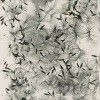
Andrea K. Henderson, “William Henry Fox Talbot: The Photograph as Memorial for Romanticism”
This essay argues that William Henry Fox Talbot’s invention of the negative-positive photographic process was facilitated by the fact that he conceived of his historical moment as one in which the ideals of Romanticism, while still attractive, were becoming increasingly untenable. Talbot found the Romantic conception of the poet as the archetypal artist deeply compelling, but he feared that he and other men of his generation might be unequal to the task of artistic creation as it was theorized and practiced by late-Romantic poets like Shelley and Byron. Talbot addresses this anxiety in a poem of his own, “The Magic Mirror,” in which he explores the possibility that a special device might preserve a poetic account of nature in the form of a visual image. For Talbot, such a technology would of necessity fall short of Romantic ideals, being an externalized manifestation of poetic power—a tool to hand rather than an inspired voice within. At the same time, he understood that it would be possessed of a magic of its own in its capacity to revive a Romantic vision of nature. This conception of the visual image as (inadequate) memorial to a poetic ideal actually empowered Talbot by enabling him to tolerate the tendency of his early experimental photographs to darken or fade, and it prompted him ultimately to produce photographs whose melancholy character constitutes an important part of their extraordinary beauty.
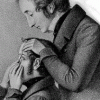
Mary Wilson Carpenter, “A Cultural History of Ophthalmology in Nineteenth-Century Britain”
The date and the nature of Patrick Brontë’s cataract surgery illustrate both progress and its lack in the science and practice of British ophthalmology. The “newest” form of such surgery, cataract extraction (developed more than a century before) and the oldest, couching (more than 2,000 years old), were both being performed by British surgeons around the mid-point of the Victorian era. Ophthalmology was one of the first specializations to become a respectable profession in British medicine, but its greatest successes—such as the cure of blindness caused by cataracts—were achieved by those willing to adopt innovative surgical techniques and new medical treatments largely developed elsewhere.
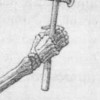
Peter Capuano, “On Sir Charles Bell’s The Hand, 1833″
This essay explores the cultural context in which Sir Charles Bell’s 1833 Bridgewater Treatise was published by focusing on the work as a culmination of his deep religious faith, his Edinburgh anatomical training, and his occupation as a surgeon at the Leeds Infirmary. It argues that The Hand was not merely an extension of Paleyan natural theology but also an important response to the era’s struggle with the grim physical reality of the supersession of manual labor by automatic manufacture.
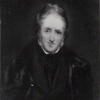
Linda M. Shires, “On Color Theory, 1835: George Field’s Chromatography“
George Field’s Chromatography, or, A Treatise on Colours and Pigments, and of Their Powers in Painting, &c. (January 1835) examines the properties of pigments, relations among colors, and color as a symbolic and moral force. While the color theories of Chromatography dated quickly, this seminal book’s importance to a material history of color and oil painting remains undisputed.

Jill Galvan, “Tennyson’s Ghosts: The Psychical Research Case of the Cross-Correspondences, 1901-c.1936”
The cross-correspondences are a well-known episode in the history of psychical research, a field that arose in the late Victorian period and was devoted to the scientific investigation of paranormal phenomena. Extending over three decades, this case was a study of possible communication from the other world. Psychical researchers collected and compared thousands of automatic writings (texts supposedly channeled unconsciously and authored by the spirits) that, while generated by several mediums, all seemed to cohere, as if spiritually orchestrated, in their tightly corresponding allusions to classical and literary lore. This essay chronicles the origins of and people involved with the cross-correspondences, together with their two most significant alleged spirit communications, the “Palm Sunday” and “Plan” messages. It then goes on to examine the patterns of allusion in the automatic writing, in order to claim the key role of Victorian poetry as constructive material: the messages, as deduced by psychical researchers, appear to be built on the stories and characters of writers like Alfred Tennyson. It was arguably this appeal to familiar literary elements of the previous century that seemed to bring the ghosts in the case to life; thus a literary analysis of the cross-correspondences can help us to understand their power to move their investigators to belief. On this reading, the cross-correspondences, though contemporaneous with the rise of modernism and with events like the Great War, are clearly a part of the “long nineteenth century.” As such they usefully emphasize the fluidity of history itself, frustrating conventional distinctions between the Victorian and the modern.
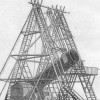
Kathleen Lundeen, “On Herschel’s Forty-Foot Telescope, 1789”
On 28 August 1789, William Herschel began exploring the cosmos with his forty-foot telescope, which would remain the largest in the world for the next half century. Though the giant instrument gave Herschel and others greater access to the deep space of the cosmos, its cultural impact extended well beyond the realm of science.

Matthew Rowlinson, “On the First Medical Blood Transfusion Between Human Subjects, 1818”
The first experiments in blood transfusion took place in the seventeenth century, using blood drawn from animals. After the death of a French patient and the trial of his physician for manslaughter, transfusion was abandoned for a century and a half. When it resumed in the nineteenth century, the first trials used human blood. They were conducted by the obstetrician James Blundell, who developed transfusion to treat women suffering from hemorrhage after childbirth. During the course of the century, transfusion was applied as a remedy to different kinds of sicknesses and injuries, and performed at different times with various fluids. By the 1880s, British doctors had abandoned transfusion with blood in favor of infusion with saline solution; the practice was only again resumed after the recognition of human blood types in the twentieth century. Developments in the practice of transfusion and infusion during the century reflect shifting views of how gender and species identity are embodied, and of relations of affinity and immunity between bodies of different kinds. They also reflect a shift from a vitalist to a mechanist understanding of blood and its function.
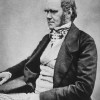
Cannon Schmitt, “On the Publication of Charles Darwin’s On the Origin of Species, 1859″
The publication of Charles Darwin’s On the Origin of Species (1859) often serves as shorthand for the first appearance of evolutionary theory. But Darwin wrote at a time when several different theories of evolution had already been proposed. Moreover, his own version of evolution had been known to select colleagues well before 1859 and became available to a wider public in 1858. Appreciating the nature of Darwin’s contribution and the extent of his success requires understanding this contemporary context as well as something of the subsequent fate of the Origin’s key idea: natural selection.
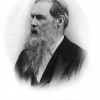
Peter Melville Logan, “On Culture: Edward B. Tylor’s Primitive Culture, 1871″
Edward B. Tylor’s Primitive Culture articulates one of two major theories of culture to emerge around 1870. His theory defines culture in descriptive terms as the “complex whole” that makes up social ideas and institutions, and in this it helped to establish anthropology as a recognized science. Tylor’s ideas were closely related to those published about the same time by Matthew Arnold, who defined culture as a humanist ideal that society should strive for.
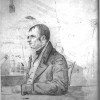
Peter W. Sinnema, “10 April 1818: John Cleves Symmes’s ‘No. 1 Circular'”
This essay revisits the infamous publication of American trader and soldier John Cleves Symmes’s “No. 1 Circular” from St. Louis Missouri in 1818, tracing the roots of Symmes’s thought to late seventeenth-century England. Symmes’s declaration of belief in an accessible and habitable hollow earth had its ideological origins in a 1691 hypothesis proposed to the Royal Society of London by the great English astronomer, Edmond Halley, whose attempt to solve the riddle of magnetic variation led him to argue for the existence of “a much more ample Creation” beneath our feet. Halley’s hollow-earth idea—which also served as the point of genesis for a vital literary subgenre, the hollow-earth romance—was eulogized in Cotton Mather’s Christian Philosopher (1721), which transferred to an American audience important insights from early-Enlightenment natural philosophy and paved the way for Symmes’s flamboyant claims about a new, subterranean world.
